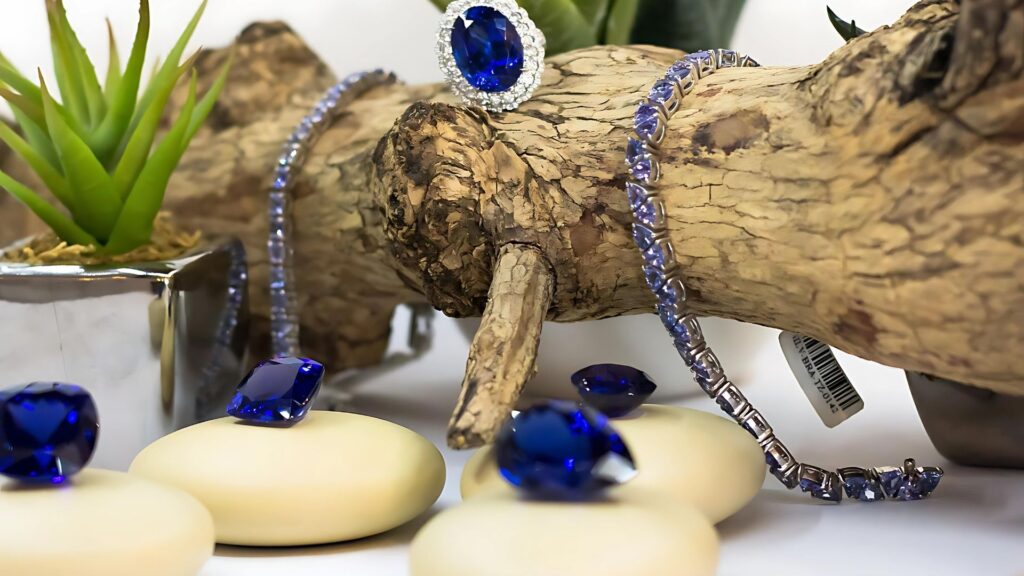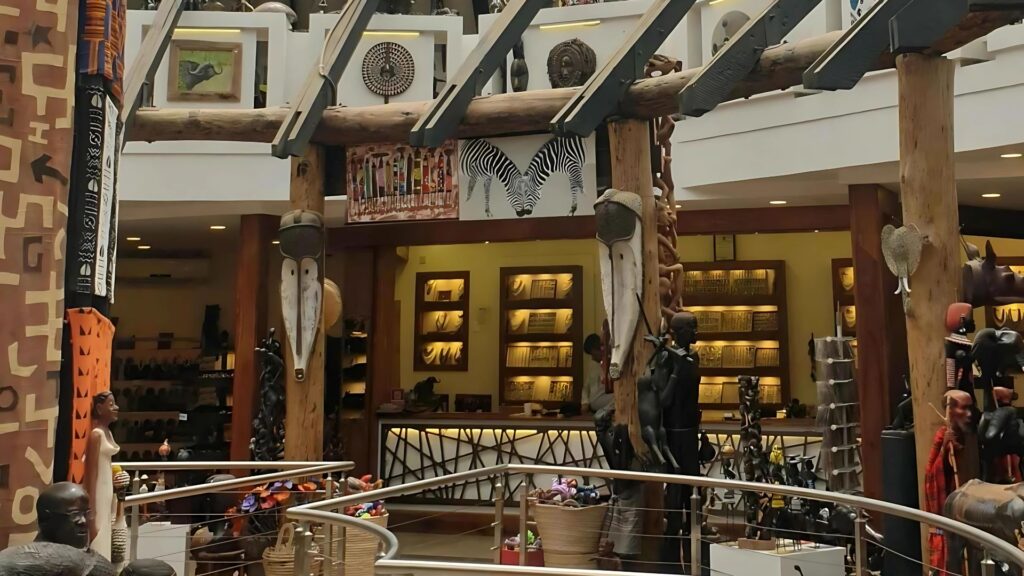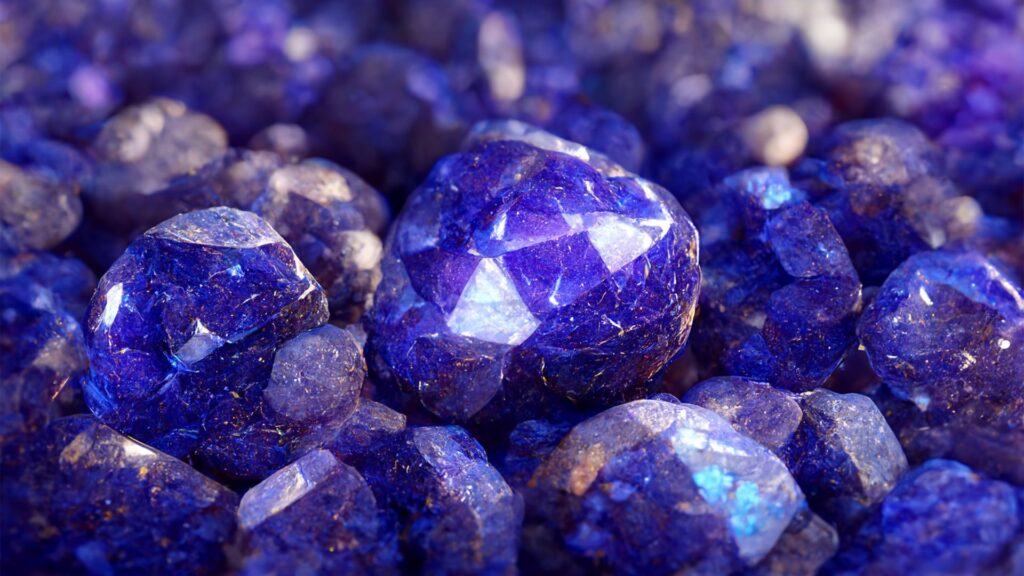Tanzanite Museum in Arusha
Tanzanite Museum in Arusha
Introduction
Tanzanite, one of the most captivating gemstones, is renowned for its brilliant blue-violet hue. Found exclusively in Tanzania, this gemstone was first discovered in 1967 and quickly became a symbol of luxury and rarity. Its vibrant color and dazzling brilliance have made it highly sought after by collectors and jewelers worldwide.
The unique origins of tanzanite in Tanzania are rooted in the Mererani Hills, located near Arusha. This is the only place on earth where tanzanite has been found, making it incredibly rare. The geological conditions that created tanzanite are believed to have occurred over 585 million years ago, and such conditions have not been replicated elsewhere.
Tanzanite’s exclusivity sets it apart in the gemstone world. With a supply limited to one small region, its value continues to grow, cementing its place as one of the most precious gemstones. Tanzanite in Tanzania not only fascinates gemstone enthusiasts but also holds significant cultural and economic importance for the country.

Location and Overview of the Museum
The Tanzanite Museum is located in the heart of Arusha Town, a vibrant city known as the gateway to Tanzania’s northern safari circuit. This central location makes it easily accessible for tourists and locals alike, allowing visitors to explore the rich history and cultural significance of this extraordinary gemstone. Arusha’s role as a hub for international travelers makes the museum a convenient stop for those interested in Tanzania’s natural treasures.
The museum offers a unique opportunity for those fascinated by Tanzanian culture and history to dive deeper into the story of tanzanite. Through interactive exhibits and detailed displays, visitors can learn about the gemstone’s discovery, mining, and importance to the local economy. The museum also highlights the gemstone’s cultural impact and its place in Tanzania’s heritage.
As a key attraction in Arusha, the Tanzanite Museum serves as an educational platform where visitors can not only admire the beauty of tanzanite but also gain a comprehensive understanding of its formation, extraction, and global significance. Whether you’re a gem enthusiast or simply curious about Tanzanite in Tanzania, the museum is an essential stop.

History of Tanzanite Mining
Tanzanite was first discovered in the 1960s, specifically in 1967, by Maasai herders in the Mererani Hills near Arusha. Initially mistaken for sapphire due to its striking blue-violet color, it was later identified as a new and rare gemstone by Manuel d’Souza, a local prospector. The gemstone quickly gained international attention, and Tiffany & Co. named it “Tanzanite” after its country of origin, further boosting its allure on the global market.
Mining activities for tanzanite in Tanzania began shortly after its discovery, with small-scale miners initially extracting the gemstone. By the 1970s, the Tanzanian government established regulations to organize the mining industry, leading to more structured operations. The Tanzanian government later took control of mining activities in the 1990s to better manage resources and ensure local benefits. Over the decades, various mining companies and local miners have contributed to the extraction of tanzanite, with large mining blocks established to optimize production.
Local miners and mining companies have played a pivotal role in the tanzanite industry. While large mining corporations oversee significant operations, artisanal miners from surrounding communities have been an integral part of tanzanite extraction. Their efforts, combined with Tanzania’s rich natural resources, have turned tanzanite mining into a critical economic activity, providing employment opportunities and contributing to local development.
Exhibits and Attractions in the Museum
The Tanzanite Museum offers a captivating array of exhibits and attractions that highlight the beauty and significance of tanzanite. One of the main draws is the stunning display of both raw and polished tanzanite gemstones. Visitors can marvel at the spectrum of colors the gemstone exhibits, from deep blue to violet hues, and see the transformation from uncut stones to finely crafted jewelry pieces. This section allows visitors to appreciate the gemstone’s natural beauty and its potential when polished and set into high-quality jewelry.
For those interested in the science behind tanzanite, the museum provides detailed geological information about its formation. Exhibits explain the unique geological conditions that led to the creation of tanzanite millions of years ago, offering insights into why this gemstone is found only in the Mererani Hills. Visitors can explore the mineral composition, the environmental factors, and the rarity that makes tanzanite so valuable.
The museum also houses historical artifacts related to tanzanite mining, including tools and equipment used by early miners. These exhibits provide a glimpse into the challenging and sometimes dangerous work involved in extracting the gemstone. Additionally, informative videos take visitors on a journey from mine to market, showing the entire process of how tanzanite is mined, graded, polished, and eventually sold in international markets, further enriching the visitor experience with educational content.
Education on Gemstone Grading and Certification
The Tanzanite Museum offers an in-depth educational experience on gemstone grading and certification, focusing on the 4 Cs: Cut, Color, Clarity, and Carat weight. Visitors can learn how each of these factors contributes to the value of a tanzanite gemstone. The Cut determines how well the gemstone reflects light, while Color—ranging from deep blue to violet—plays a crucial role in its rarity. Clarity refers to the presence of internal flaws or inclusions, with higher clarity stones being more valuable. Finally, Carat weight measures the gemstone’s size, impacting its overall worth.
In addition to the 4 Cs, the museum explains the certification process for tanzanite stones. Certified gemstones undergo strict evaluation to ensure their quality and authenticity. Visitors can see how professional gemologists assess tanzanite to provide official documentation of its attributes, including its origin. This certification is vital in establishing the gemstone’s market value and providing buyers with confidence in their purchase.
The museum also teaches visitors how to distinguish authentic tanzanite from replicas or lower-quality imitations. Exhibits explain the visual and physical differences between genuine tanzanite and synthetic stones, such as the subtle variations in color and clarity. This knowledge empowers visitors to make informed decisions when purchasing tanzanite, ensuring they invest in authentic, high-quality gemstones.

Interactive Experiences for Visitors
The Tanzanite Museum offers a variety of interactive experiences designed to engage visitors and deepen their understanding of this remarkable gemstone. One highlight is the hands-on experience with gemstone cutting and polishing. Visitors have the unique opportunity to try their hand at shaping and polishing tanzanite under the guidance of expert jewelers. This interactive activity allows them to appreciate the skill and precision involved in transforming a rough stone into a beautiful, polished gem.
For those interested in the mining process, the museum provides virtual tours of Tanzanite mines. Using cutting-edge technology, visitors can embark on a virtual journey deep into the Mererani Hills, exploring the mining tunnels and learning about the methods used to extract tanzanite. This immersive experience offers a realistic view of the mining environment and the challenges faced by miners, all without leaving the museum.
The museum also hosts educational workshops for gemstone enthusiasts, offering detailed lessons on tanzanite’s history, geology, and market trends. These workshops are perfect for visitors eager to deepen their knowledge about gemstones, covering topics such as gemstone valuation, identification techniques, and the global trade of tanzanite. This hands-on learning experience appeals to both casual visitors and dedicated gem collectors.
The Museum Store
The Tanzanite Museum Store offers visitors the opportunity to purchase certified Tanzanite jewelry and gemstones, providing a selection of high-quality pieces ranging from elegant rings and necklaces to loose gemstones. Each gemstone comes with official certification, ensuring its authenticity, quality, and origin from the Mererani Hills. Buyers can have confidence in knowing they are acquiring genuine tanzanite directly from Tanzania.
In addition to jewelry, the store also features locally handcrafted Tanzanite-inspired products, including artisanal items such as sculptures, beaded crafts, and souvenirs that reflect Tanzanian culture. These products make for unique keepsakes, blending the beauty of tanzanite with the artistic traditions of local craftspeople.
The Museum Store is committed to ethical sourcing and supporting local artisans, ensuring that all tanzanite sold is responsibly mined and that local communities benefit from the gemstone trade. The store partners with local miners and artisans to promote fair trade practices, creating economic opportunities for Tanzanians while preserving the integrity of the tanzanite industry. This dedication to ethical practices allows visitors to make a meaningful contribution to the Tanzanian economy with their purchases.
Visitor Information
Opening Hours and Entry Fees:
The Tanzanite Museum is open daily, offering visitors ample time to explore its exhibits. Typically, the opening hours are from 9:00 AM to 5:00 PM, with slightly extended hours during peak tourist seasons. The entry fee is generally affordable, with special discounts for children, students, and group bookings. Visitors can also check for occasional promotions or discounted entry rates during events or holidays.
Guided Tours and Special Events:
The museum offers guided tours led by knowledgeable staff who provide in-depth insights into tanzanite’s history, mining, and significance. These tours are available in multiple languages, making them accessible to international visitors. Additionally, the museum hosts special events, including gemstone exhibitions, educational talks by geologists, and jewelry showcases. For those interested in learning more, workshops on gemstone grading and polishing are occasionally offered.
Accessibility and Nearby Attractions:
The museum is fully accessible, with ramps and facilities for visitors with mobility challenges. Located in central Arusha, it is easily accessible by foot or short drives from popular hotels and safari departure points. Nearby attractions include local markets, cultural heritage centers, and national parks like Arusha National Park, making it a convenient stop for tourists exploring Tanzania’s northern circuit. Visitors can easily integrate the museum into a day of sightseeing around Arusha Town.
Why Choose Us
Expert Guides
Guides ensure unforgettable, safe, and enriching experiences on every adventure.
Tailor-made Experience
Tailor-made experiences crafted to fulfill your unique desires and preferences.
Unique Bespoke Deals
Unique bespoke deals tailored to your preferences, creating unforgettable safari experiences.
Hassle Free Adventures
Hassle-free adventures: where every moment is an unforgettable journey.

Verified Chao MA team of professionals that I would recommend WilliamsomAdventures is a very recommendable Safari team, in the pre-consultation and confirmation of details William gave me the biggest feeling of professionalism and reliability. As I was travelling alone with my children on the safari, I was very satisfied with the safety and hassle-free experience throughout the trip, all the matters were just as William had arranged for us before departure, and all our requirements were greatly satisfied. Our guide, Ibra, was very professional on our safari and helped us to maximise our safari with safety in mind, we saw a lot of animals on our journey and he introduced us to many of them to help us understand the land better. Undoubtedly, my children and I were very impressed with this trip in July and I would gladly recommend them to friends who are interested in going Safari in Tanzania.Verified
Chao MA team of professionals that I would recommend WilliamsomAdventures is a very recommendable Safari team, in the pre-consultation and confirmation of details William gave me the biggest feeling of professionalism and reliability. As I was travelling alone with my children on the safari, I was very satisfied with the safety and hassle-free experience throughout the trip, all the matters were just as William had arranged for us before departure, and all our requirements were greatly satisfied. Our guide, Ibra, was very professional on our safari and helped us to maximise our safari with safety in mind, we saw a lot of animals on our journey and he introduced us to many of them to help us understand the land better. Undoubtedly, my children and I were very impressed with this trip in July and I would gladly recommend them to friends who are interested in going Safari in Tanzania.Verified jeff C7-Day LeMosho Route I'm thrilled with Williamson Adventures! My brother and I traveled from Canada and were initially quite nervous about trekking Mount Kilimanjaro. However, upon arriving in Moshi, all our nerves vanished. We were warmly welcomed at the hotel by William and one of our guides, who were incredibly friendly. The rest of the trip was fantastic! The guides, porters, and cooks were all amazing, and the food was delicious. The support and encouragement we received throughout exceeded our expectations. Planning the trip required some coordination, but William was always quick to respond and incredibly helpful. For example, he seamlessly arranged our pick-up from Nairobi to Moshi. He also organized an extra night at the hotel in Moshi and an airport shuttle, even though he didn't have to. This company truly goes above and beyond to make the experience unforgettable. We highly, highly recommend Williamson Adventures! Thanks to William, our guides Kevin and Yoeseff, and our amazing porters—the real superheroes!Verified
jeff C7-Day LeMosho Route I'm thrilled with Williamson Adventures! My brother and I traveled from Canada and were initially quite nervous about trekking Mount Kilimanjaro. However, upon arriving in Moshi, all our nerves vanished. We were warmly welcomed at the hotel by William and one of our guides, who were incredibly friendly. The rest of the trip was fantastic! The guides, porters, and cooks were all amazing, and the food was delicious. The support and encouragement we received throughout exceeded our expectations. Planning the trip required some coordination, but William was always quick to respond and incredibly helpful. For example, he seamlessly arranged our pick-up from Nairobi to Moshi. He also organized an extra night at the hotel in Moshi and an airport shuttle, even though he didn't have to. This company truly goes above and beyond to make the experience unforgettable. We highly, highly recommend Williamson Adventures! Thanks to William, our guides Kevin and Yoeseff, and our amazing porters—the real superheroes!Verified Xinyue QGreat Safari Experience Experienced guide, saw all of the great five. Communication is fast with quick response. The itinerary arrangement is reasonable and interesting. Despite some misunderstanding in the beginning, William was able to rearrange accommodation within short period of time. Helped to celebrate birthday of one friend during the trip, very unforgettable experience!!Verified
Xinyue QGreat Safari Experience Experienced guide, saw all of the great five. Communication is fast with quick response. The itinerary arrangement is reasonable and interesting. Despite some misunderstanding in the beginning, William was able to rearrange accommodation within short period of time. Helped to celebrate birthday of one friend during the trip, very unforgettable experience!!Verified Leon CLucky safari We came across Williamson Adventure by accident, and we also chose a few ground handlers to compare, and Williamson was the one with the fastest feedback and the best value for money in terms of combined quotes. Our team of 10 people unanimously gave them five stars, they provide the best service. The owner of Williamson was patient and meticulous in communicating with us beforehand and tried his best to meet our every request, and he also solved the problems we encountered during the safari, and even went to the airport to see us off before we finally left Arusha. We are very satisfied with Williamson's sincerity, and would like to recommend it to every friend who is interested in safari in Tanzania, it's really great and very thoughtful!Verified
Leon CLucky safari We came across Williamson Adventure by accident, and we also chose a few ground handlers to compare, and Williamson was the one with the fastest feedback and the best value for money in terms of combined quotes. Our team of 10 people unanimously gave them five stars, they provide the best service. The owner of Williamson was patient and meticulous in communicating with us beforehand and tried his best to meet our every request, and he also solved the problems we encountered during the safari, and even went to the airport to see us off before we finally left Arusha. We are very satisfied with Williamson's sincerity, and would like to recommend it to every friend who is interested in safari in Tanzania, it's really great and very thoughtful!Verified Navigate14938214079一次精美的safari旅行 Williamson Adventures是一家特别棒的地接社,行程安排超过预期,在交流阶段针对各种细节都回复的特别耐心,酒店也很早就预定下来,而且还贴心为我们安排了从桑岛机场到酒店的接机服务,非常满意,超预期Verified
Navigate14938214079一次精美的safari旅行 Williamson Adventures是一家特别棒的地接社,行程安排超过预期,在交流阶段针对各种细节都回复的特别耐心,酒店也很早就预定下来,而且还贴心为我们安排了从桑岛机场到酒店的接机服务,非常满意,超预期Verified AshleyOutstanding experience with Williamson Adventures I would say I couldn't be more impressed with their service provided by Williamson Adventures! William were incredibly helpful, he always replied to my messages in a quick and efficient way. The logistics of the trip were flawlessly managed. Transfers, guides were all arranged seamlessly, allowing me to relax and immerse myself in the safari adventure. The guide has experience of more than 10 year, was really a pro—well-informed, friendly, and passionate about sharing their knowledge of those animals and landscapes. And we managed to see Big Five! Overall, Williamson Adventures exceeded my expectations in every way. Their professionalism, attention to detail, and genuine care for their clients’ experiences make them a great choice for anyone planning a trip to Tanzania. I really appreciate that and will definitely come back again! xVerified
AshleyOutstanding experience with Williamson Adventures I would say I couldn't be more impressed with their service provided by Williamson Adventures! William were incredibly helpful, he always replied to my messages in a quick and efficient way. The logistics of the trip were flawlessly managed. Transfers, guides were all arranged seamlessly, allowing me to relax and immerse myself in the safari adventure. The guide has experience of more than 10 year, was really a pro—well-informed, friendly, and passionate about sharing their knowledge of those animals and landscapes. And we managed to see Big Five! Overall, Williamson Adventures exceeded my expectations in every way. Their professionalism, attention to detail, and genuine care for their clients’ experiences make them a great choice for anyone planning a trip to Tanzania. I really appreciate that and will definitely come back again! xVerified Wander09596438110难忘的非洲之行 第一次去非洲旅游,通过safarigo与多家地接社取得了邮件联系,William是其中回复最迅速且沟通最顺畅的,添加微信后对行程的安排和细节都根据我们的要求一一修改核对,他替我们安排的最后一晚住宿甚至能在房间阳台看见斑马和水羚;因为国际航班晚点导致在坦桑尼亚国内转机时间不足的问题能及时帮忙与航司沟通解决,后续发生了一些不愉快也妥善处理了;向导Godlove车技杠杠的,我们车况OK工具齐全,路上碰到其他地接社的车辆故障他都会出手相助,safari途中多次近距离看到狮子也多亏有他。此外想提醒各位同胞,坦桑尼亚的中国游客相对较少,中文导游水平良莠不齐,如果需要地接社提供相关服务,建议通过即时通讯软件提前确认导游的口语水平,以免出现与预期大相径庭的情况。总的来说,这是一次非常难忘和美妙的非洲之行,希望有机会能再来坦桑尼亚。Verified
Wander09596438110难忘的非洲之行 第一次去非洲旅游,通过safarigo与多家地接社取得了邮件联系,William是其中回复最迅速且沟通最顺畅的,添加微信后对行程的安排和细节都根据我们的要求一一修改核对,他替我们安排的最后一晚住宿甚至能在房间阳台看见斑马和水羚;因为国际航班晚点导致在坦桑尼亚国内转机时间不足的问题能及时帮忙与航司沟通解决,后续发生了一些不愉快也妥善处理了;向导Godlove车技杠杠的,我们车况OK工具齐全,路上碰到其他地接社的车辆故障他都会出手相助,safari途中多次近距离看到狮子也多亏有他。此外想提醒各位同胞,坦桑尼亚的中国游客相对较少,中文导游水平良莠不齐,如果需要地接社提供相关服务,建议通过即时通讯软件提前确认导游的口语水平,以免出现与预期大相径庭的情况。总的来说,这是一次非常难忘和美妙的非洲之行,希望有机会能再来坦桑尼亚。Verified israel cProfessional and reliable service. 100% recommended the company Williamson Adventures. It was a pleasure to have booked my trip with this company. Very good communication from the beginning. They helped me with the 5-day itinerary in Tanzania, visiting the most important parks such as Tarangire, Lake Manyara, Serengeti and Ngorongoro. The guide we had was very punctual and also very professional at each point we visited. The Lodges that were booked were of good quality and generally very professional service. 100% recommendable. Thanks for everything William!!Verified
israel cProfessional and reliable service. 100% recommended the company Williamson Adventures. It was a pleasure to have booked my trip with this company. Very good communication from the beginning. They helped me with the 5-day itinerary in Tanzania, visiting the most important parks such as Tarangire, Lake Manyara, Serengeti and Ngorongoro. The guide we had was very punctual and also very professional at each point we visited. The Lodges that were booked were of good quality and generally very professional service. 100% recommendable. Thanks for everything William!!Verified Rafael MBest safari in Ngorongoro, Serengeti, Tarangire and Lake Manyara The best safari agency in Tanzania. The best price on a 5-day safari checked with 8 other agencies !!! Very good driver and guide.Verified
Rafael MBest safari in Ngorongoro, Serengeti, Tarangire and Lake Manyara The best safari agency in Tanzania. The best price on a 5-day safari checked with 8 other agencies !!! Very good driver and guide.Verified LCF201309077-Day Migration Safari with Williamson: A Once-in-a-Lifetime Experience! My friend and I had a 7-day migration safari (River Crossing) with Williamson Adventures exceeded our expectations. The captivating sights of wildebeest herds were absolutely breathtaking, a true testament to the wonders of nature. Our knowledgeable guide Raymond made the experience even more remarkable with his deep understanding of the wildlife and their behaviors. The seamless combination of the safari with a day trip to Materuni Waterfall and Coffee Tour added a perfect touch of cultural immersion. The lush greenery and the thundering waterfall were a sight to behold, and the coffee tour was enlightening. Williamson's team orchestrated a flawless journey, ensuring comfort and safety throughout. This safari was a life-changing experience, and I'm incredibly grateful to William and his team for making it so exceptional.Showing our latest reviews
LCF201309077-Day Migration Safari with Williamson: A Once-in-a-Lifetime Experience! My friend and I had a 7-day migration safari (River Crossing) with Williamson Adventures exceeded our expectations. The captivating sights of wildebeest herds were absolutely breathtaking, a true testament to the wonders of nature. Our knowledgeable guide Raymond made the experience even more remarkable with his deep understanding of the wildlife and their behaviors. The seamless combination of the safari with a day trip to Materuni Waterfall and Coffee Tour added a perfect touch of cultural immersion. The lush greenery and the thundering waterfall were a sight to behold, and the coffee tour was enlightening. Williamson's team orchestrated a flawless journey, ensuring comfort and safety throughout. This safari was a life-changing experience, and I'm incredibly grateful to William and his team for making it so exceptional.Showing our latest reviews
How it works
- Describe your dream adventure
- Expert will help curate your experience
- Confirm & start packing for the adventure

Let's plan your dream Safari!
Enquire now and Our Experts will get back to you within 24 hours


